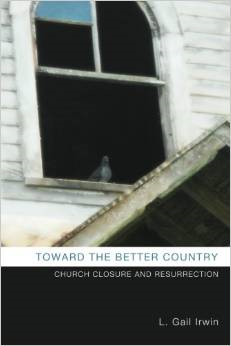With all the struggling churches out there, it is likely that some of you are asking yourselves: how much can we cut from our budget in staff expenses, and still be seen as a respectable church?
For example, what happens if your church is unable to afford a preacher? Can you still worship together? Well, you might turn to “A Sermon for Every Sunday”, a lectionary based resource that offers videotaped sermons by the likes of Brian Blount and MaryAnn McKibben Dana, among others. For $4.99 each, you can pop one of these babies in the DVD player and project a thoughtful, intelligent sermon drawn from the scriptures for the week.
Or what if your wonderful organist injures her foot? (This has happened to me twice!). Everyone knows how hard it is to find a good organist these days. Well, search no more! The UCC has in existence a collection of recorded organ accompaniments on CD, covering every hymn in the New Century Hymnal. Any congregation with a decent sound system can sing hymns accompanied by a world class organist.
When it comes to governance, a lay Moderator runs the governing boards of UCC churches; no pastor needed! In the Presbyterian Church (USA), a pastor is required to moderate a Session meeting. But if there is a pastoral vacancy, provisions can be made for a pastor from another congregation to moderate a Session meeting. In other words, you can “rent” a pastor to govern your Board.
Deacons may be trained to visit and serve communion to the home-bound. Lay ministers can be licensed to baptize and bury the dead. These people, while not ordained, may still have authentic spiritual gifts for ministry.
Of course, if you really need an ordained minister, anyone can get a certificate of ordination that authorizes them to perform weddings or other pastoral functions. If Conan O’Brien can do it, you can too!
Staffing is often the biggest piece of a church’s budget, and many people assume the success of a church hinges on its having a qualified pastor. Yet, we live in a world where MOOCS* are intruding on traditional education and knee replacements are being outsourced to India. Churches I observe are moving from two pastors to one, from full time to half time, from ordained to licensed, and from Christian educators to volunteers, all in an effort to lower their costs.
This trend may be both perilous and full of potential. Mormon and Jehovah’s Witness churches have functioned without paid clergy for many years, relying instead on lay leaders. Eugene Peterson, in his latest book, “The Pastor“, tells of his church appointing a cadre of women who took turns volunteering in the church office (in the 70’s). These models seem antiquated at a time when many households are chronically over-scheduled. But I wonder if there is anything for us to learn from them.
Progressive Protestant churches want educated preachers and teachers, patient, mature youth leaders, qualified administrators, musicians and custodians. But how do we attract these human resources if we can’t pay them very much or anything at all? Should we be “outsourcing” our sermons? Delegating more tasks to already exhausted volunteers? Sharing staff with other churches? Narrowing the range of ministries we provide? Asking professionals to work for free?
What do you think?





